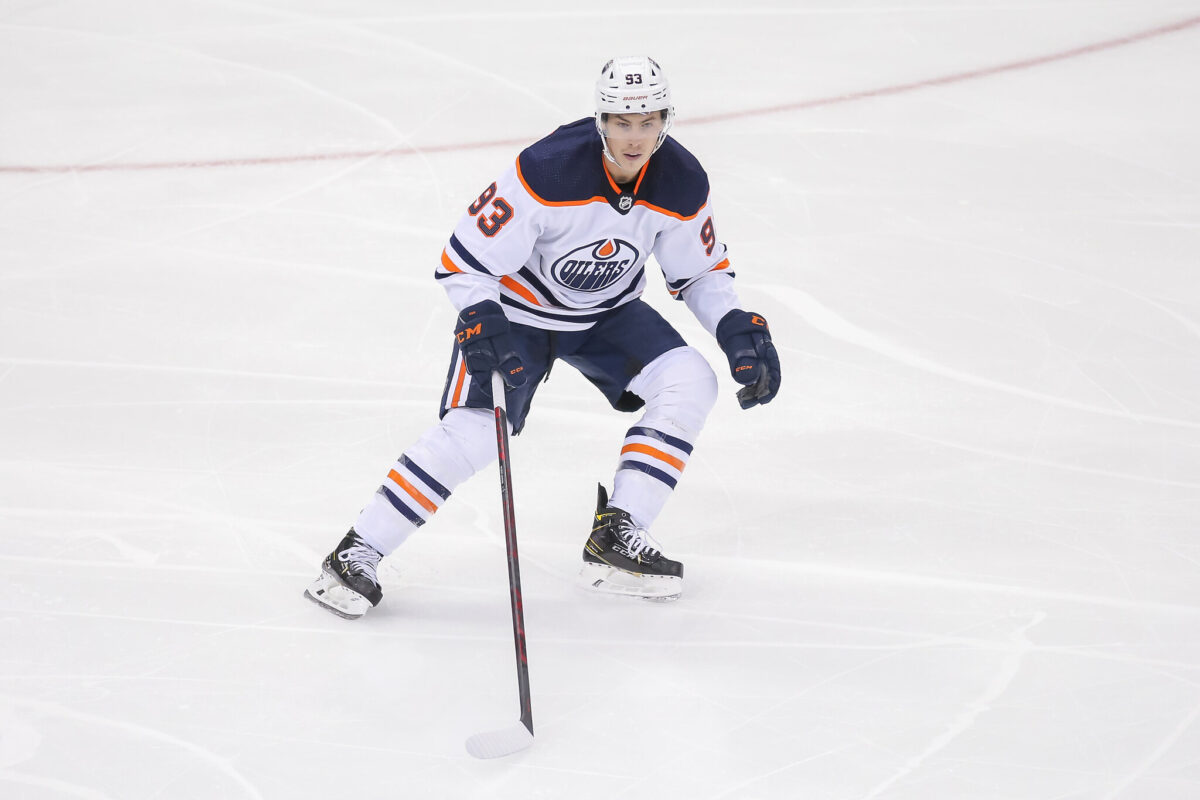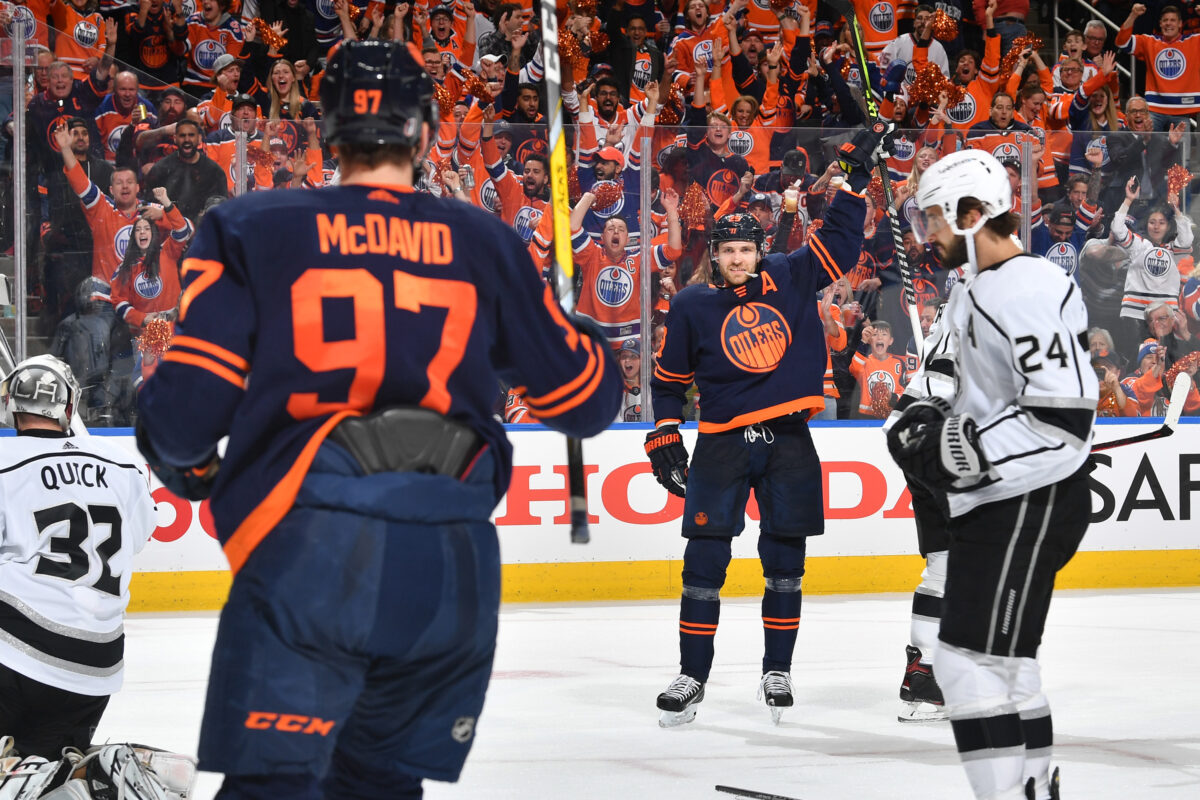As players continue to demand more on their contracts and the world gets back to normal, the salary cap in the NHL is expected to start to rise again. It rose each season from 2013-14 to 2019-20, but the pandemic put a hold on that. Teams have had to manage, and the Edmonton Oilers have been a perfect example of that.
In an interview with Elliotte Friedman and Jeff Marek, NHL deputy commissioner Bill Daly discussed the potential future of the salary cap. The cap rose $1 million for the 2022-23 season but should get an even larger bump by the 2023-24 season. Daly said, “I’ve seen some preliminary estimates recently which would make me more optimistic on the cap going up sooner whether that’s in two seasons or three seasons, I think it’s more likely than not two seasons rather than three.”
Once escrow is paid, Gary Bettman anticipates the rise in the annual salary cap to increase. With the contracts the Oilers have and will need to give out in the coming years, this will be big for the team. Let’s look at all the areas the projected increase will benefit Edmonton.
Oilers Have More Than a Few Concerning Long-Term Contracts
Over the past year, the Oilers have signed Ryan Nugent-Hopkins, Zach Hyman, Darnell Nurse, and Evander Kane to pretty lucrative deals. Each of the long-term contracts still has at least six more years on them, excluding Kane’s. So, as many long-term contracts do when signed in a player’s late 20s/early 30s, it is expected to look bad near the end.

The Oilers are still feeling the effects of two buyouts (James Neal and Andrej Sekera) whose cap hits are still on the books. It’s no guarantee, but there’s always a risk that one of the three players at the beginning of their long-term deals could become a buyout candidate down the line. Cap held up in buyouts is unneeded money used and could always be put to better use.
With an increased salary cap, in five years, contracts like Nugent-Hopkins and Hyman’s of just over $5 million average annual value (AAV) will feel more like a $3.5-4 million in terms of the percentage of the cap taken up. As they all are top players on the Oilers now, five to six years is a long time to expect them to keep up their play. It is very possible they turn into bottom-six players as younger talent comes in and fills the top of the lineup.
Oilers Won’t Have to Waste as Many Assets to Get Rid of Contracts
Recently, the Oilers have either had to move a player with a sweetener to free up cap space or have chosen not to and been hurt for it. Zack Kassian was traded at the 2022 NHL Draft to the Arizona Coyotes to free up $3.2 million for two more seasons. But before this offseason, the Oilers have had to struggle with allotting cap space ($4.5 million) to Mikko Koskinen, who was only a starting goaltender the first year or so of his contract.
Koskinen just so happened to be under contract during the years of the flat cap, which didn’t help the situation. But think of if the salary cap would have continued to rise by a couple of million per season these last few seasons, he would have either been easier to move, or the Oilers wouldn’t have been so strapped for cap space and could have managed better.
The return for moving a bad contract right now is around a first-round pick, and we’ve seen a couple this offseason already, but that’s not what the future should hold for the Oilers. The long-term contracts will look better in comparison to the salary cap later on.
A Number of Oilers Expecting Larger Paydays in the Coming Years
With a number of older players locked up to long-term deals, we also have to look at which players are going to require new and larger ones in the coming years. The most important of the bunch, Connor McDavid and Leon Draisaitl, will have one to two years remaining on their deals at the time the cap is projected to rise significantly. By the way, both have outperformed their contracts already, so a significant chunk of the cap space on their next contracts will have to go to the team’s stars.

Not only that, but the future on defence will have to be dealt with before the salary cap makes a jump. That means Evan Bouchard and Philip Broberg will have gotten raises once their entry-level deals run out after 2022-23 and 2023-24. Bouchard has already proven that he is going to get a significant raise after leading the Oilers’ defence in points in his first full season in the NHL. Broberg is entering what will be his rookie season and will have the same opportunity as Bouchard had. They both may not get $6-8 million right away, and bridge deals may be the first step, but you can count on them getting paid and taking up a large part of the salary cap in a few years.
Related: 3 Ways the Oilers Can Sign McLeod & Fit His Cap Hit on Roster
There’s no guarantee for the young players yet, but there are players to watch who may very well be a part of the Oilers and need raises, including Kailer Yamamoto, Jesse Puljujarvi, Dylan Holloway, Xavier Bourgault, Stuart Skinner, Ryan McLeod, and possibly even Tyler Tullio and Carter Savoie. Of course, it will take time, but these players are much more talented than the bottom-six the Oilers currently have. That means the up-and-comers are expected to be top-six talent and will require larger salaries.
In no way can the projected increase in salary cap be a bad thing for the Oilers, especially with the star power they have and the number of skilled players they will want to keep on their roster through the Stanley Cup window. It will benefit many other teams up against the cap as well, but not all of them are in the position the Oilers are in regards to the three areas discussed above.